Bones and joints
Heel spur - On tiptoes
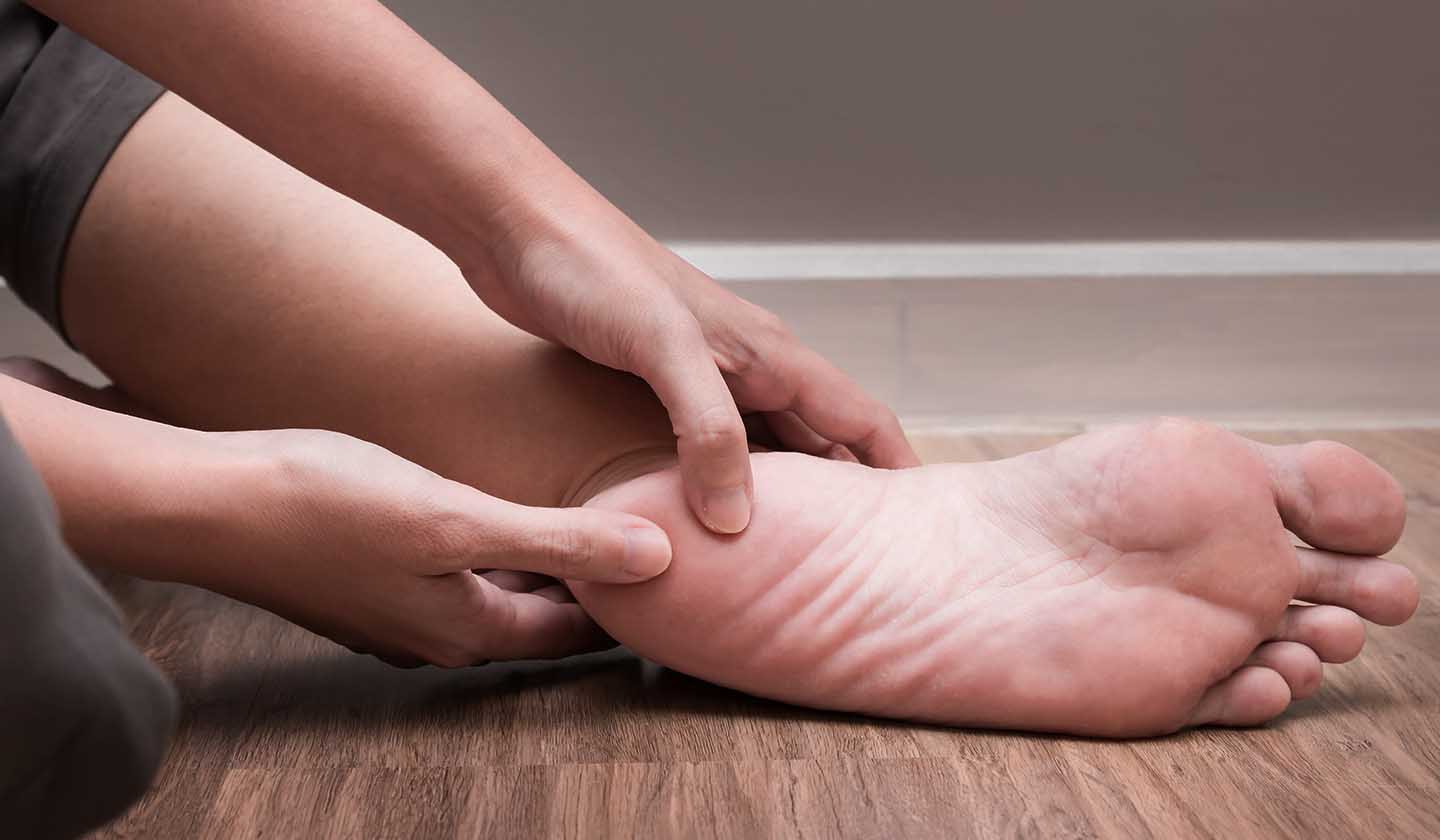
It is estimated that 11-27% of the Portuguese people have heel spurs, although it is not always associated with the symptom of pain. Women are more affected than men and this problem arises mainly as of the age of 40, and more frequently in people who are overweight.
The presence of heel spurs can be manifested by intense pain in the bottom or inner area of the heel, and the pain is more intense in the morning.
Learn more about this orthopaedic problem which, in more serious cases, can seriously interfere with daily activities.

What is a heel spur?
It is a bony protuberance (which reflects an abnormal calcium deposit) that forms at the bottom of the calcaneus (heel bone), next to the insertion of the plantar fascia or in the posterior region of the calcaneus, next to the insertion area of the Achilles tendon.
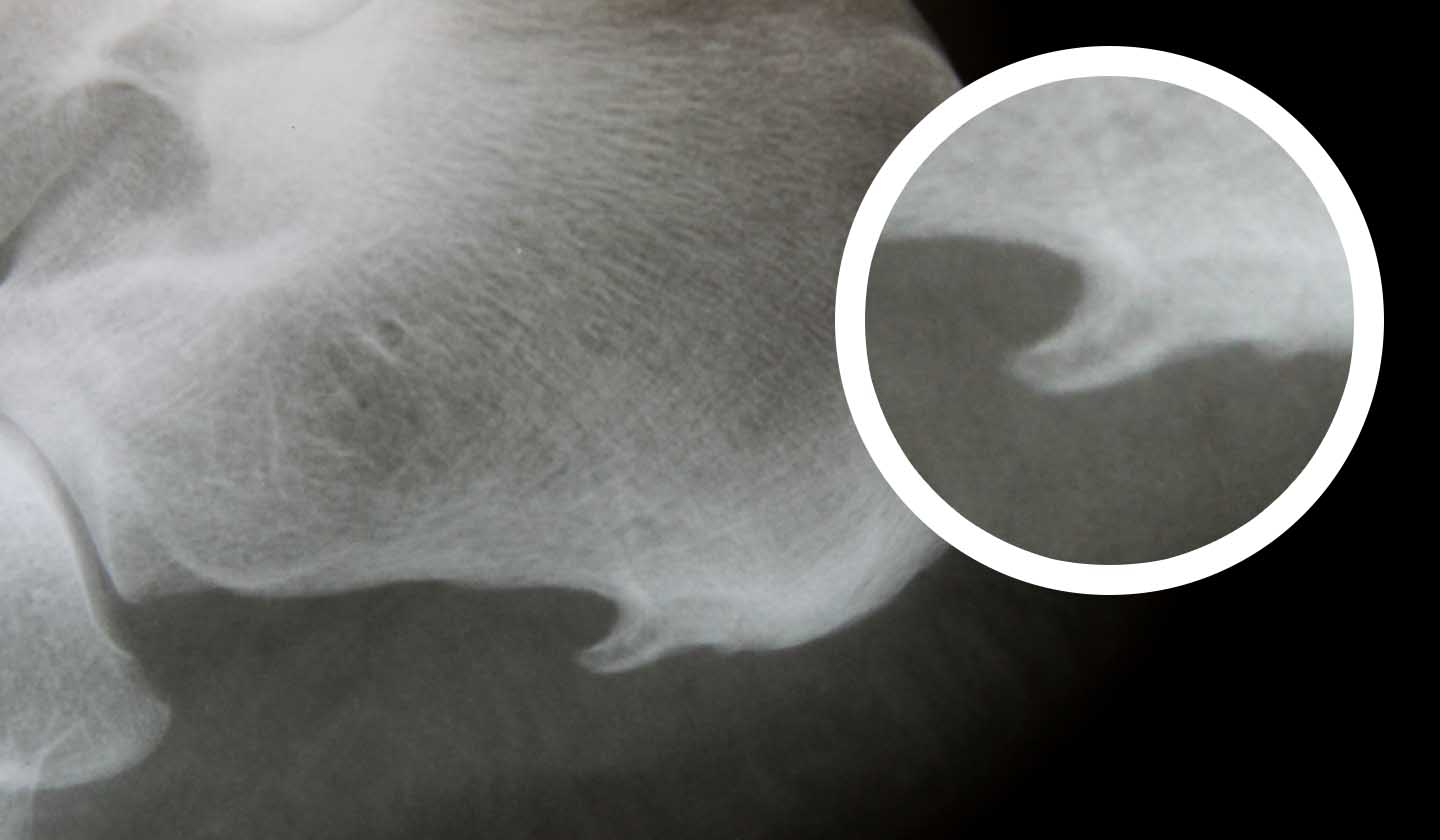
Causes
The calcaneus is the biggest bone in the foot, and it is the one that supports the weight of our body, being therefore subject to intense and constant impact.
The heel spur can develop due to any situation that causes constant and intense pressure on the sole of the foot for long periods of time. This can lead to the development of microtraumas and chronic inflammation in the lower part of the heel, affecting not only the calcaneus, but also the tendons and the plantar fascia (fibrous ligament present in the sole of the foot). Over time, these microtraumas and chronic inflammation favour the calcification of the tissues surrounding the calcaneus, leading to the formation of spurs.
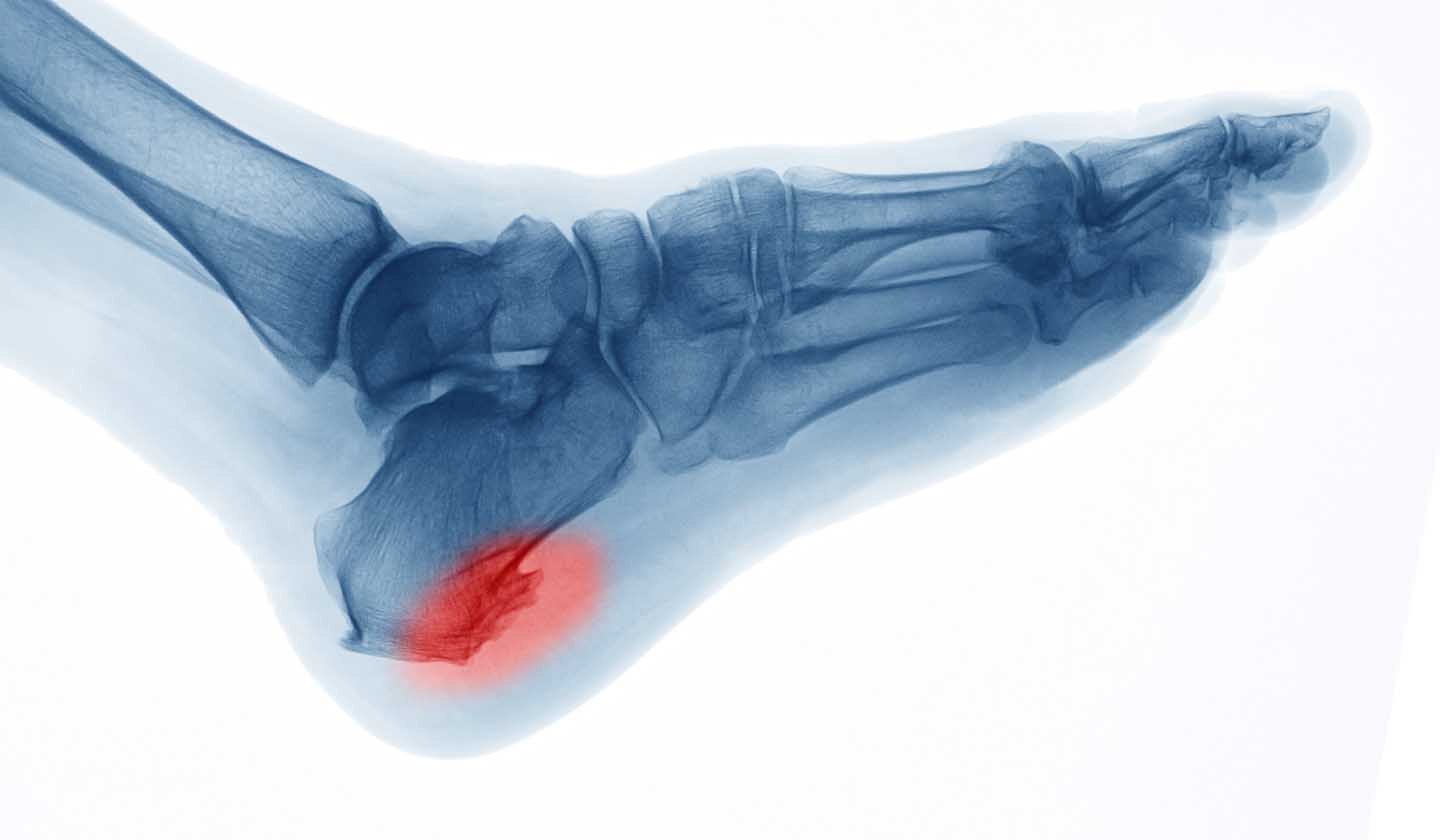
Risk factors for its development
- Age (over 40);
- Excess weight (overload on the feet);
- Flat foot (no arch) or pes cavus (high arch);
- Practice of high impact sports;
- Working long hours in a standing position;
- Frequent use of high heels or inappropriate shoes (hard and / or thin soles);
- Changes in gait (clubfoot);
- Pre-existence of health problems (plantar fasciitis, osteoarthritis, rheumatoid arthritis, gout).
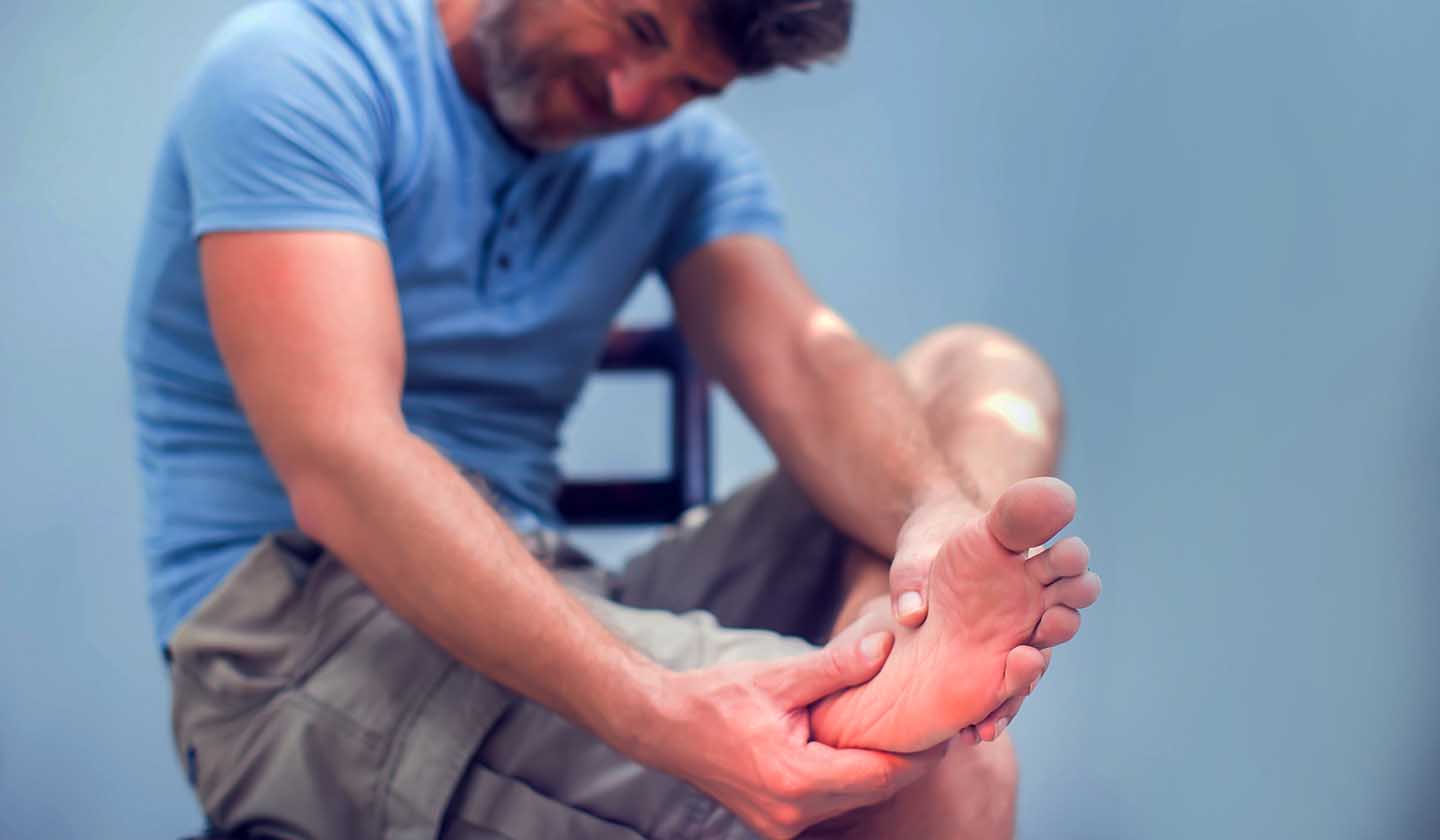
Symptoms
In most cases (95%), heel spurs are an asymptomatic problem. When there is pain, it can also mean that there is inflammation in the area surrounding the heel, namely the plantar fascia, in the calcaneus insertion area.
Thus, the main symptom is pain, like a “twinge” in the heel that relieves at rest and increases under effort. The pain can be so severe that the person is not able to walk at that moment.
The pain is more pronounced in the morning, when the person gets out of bed (after several hours of rest) and takes the first steps, or after periods of rest (for example, after sitting down). After walking for 5 to 10 minutes, foot structures adapt and the pain slowly disappears; however, it may worsen again at the end of the day.
Diagnosis
The diagnosis must be made by a specialist doctor (orthopaedist) who may carry out several tests to make the correct diagnosis (X-ray, Magnetic resonance).
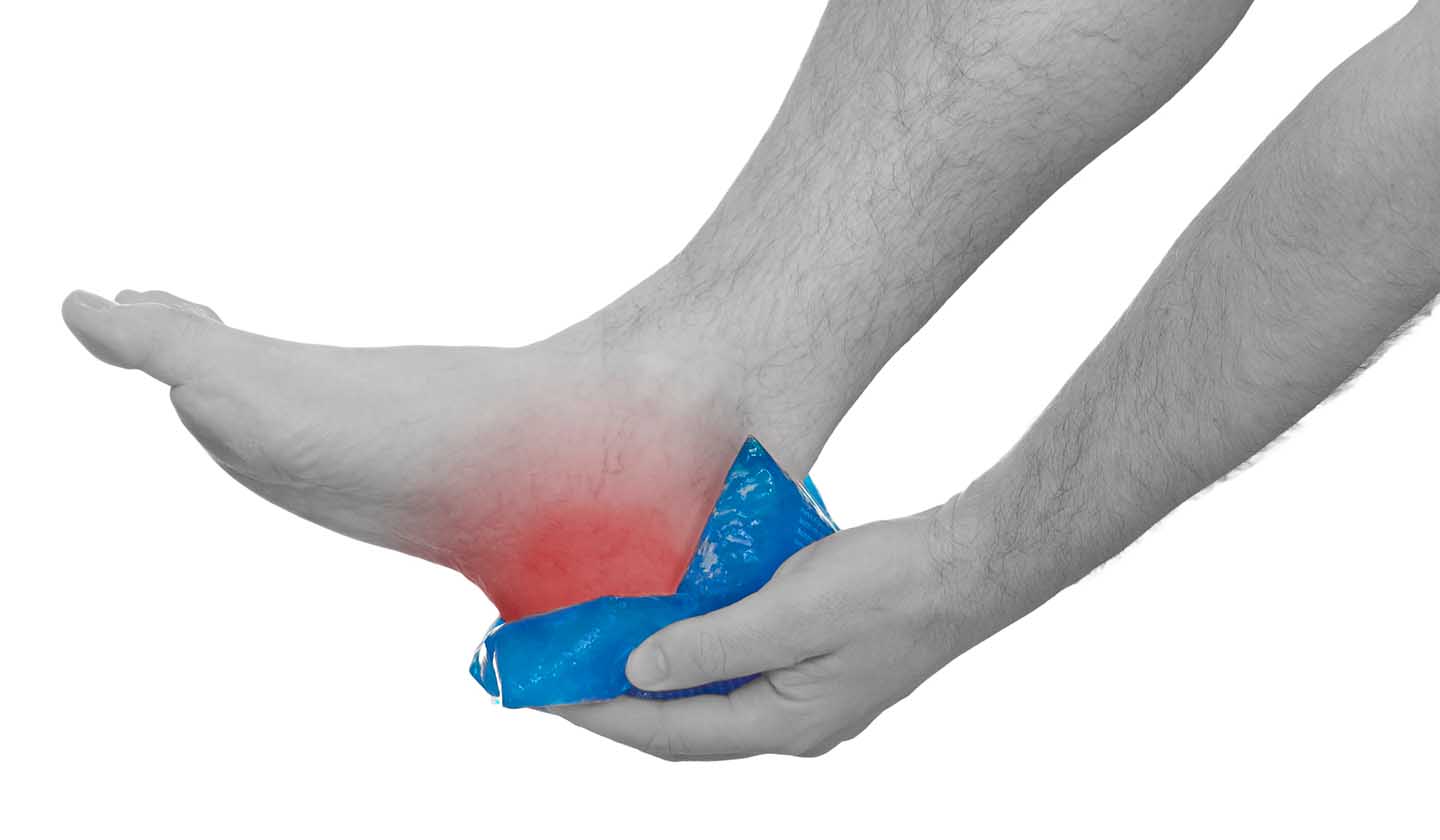
Treatment and recommendations
Heel spurs should be treated when symptoms set on, namely pain, which indicates that there may be inflammation of the surrounding tissues. Surgery is only in severe cases to remove the spur, but it is rare, as most cases improve with the adoption of some measures, such as the ones listed below.
- Local application of ice for 10-15 min., 3 x day (it reduces inflammation and relieves pain in acute phases);
- Leg elevation;
- Specific stretching exercises (pulling your toes up and down for 20 seconds and repeating this several times, rolling your foot on a tennis ball;
- Wearing special shoes or insoles (heel insoles) to reduce pressure on the heel bone;
- In cases of excess weight, it is important to lose weight (to reduce pressure on the calcaneus);
- Anti-inflammatories (pills or creams/gels) - talk to your pharmacist or doctor
- Physiotherapy.
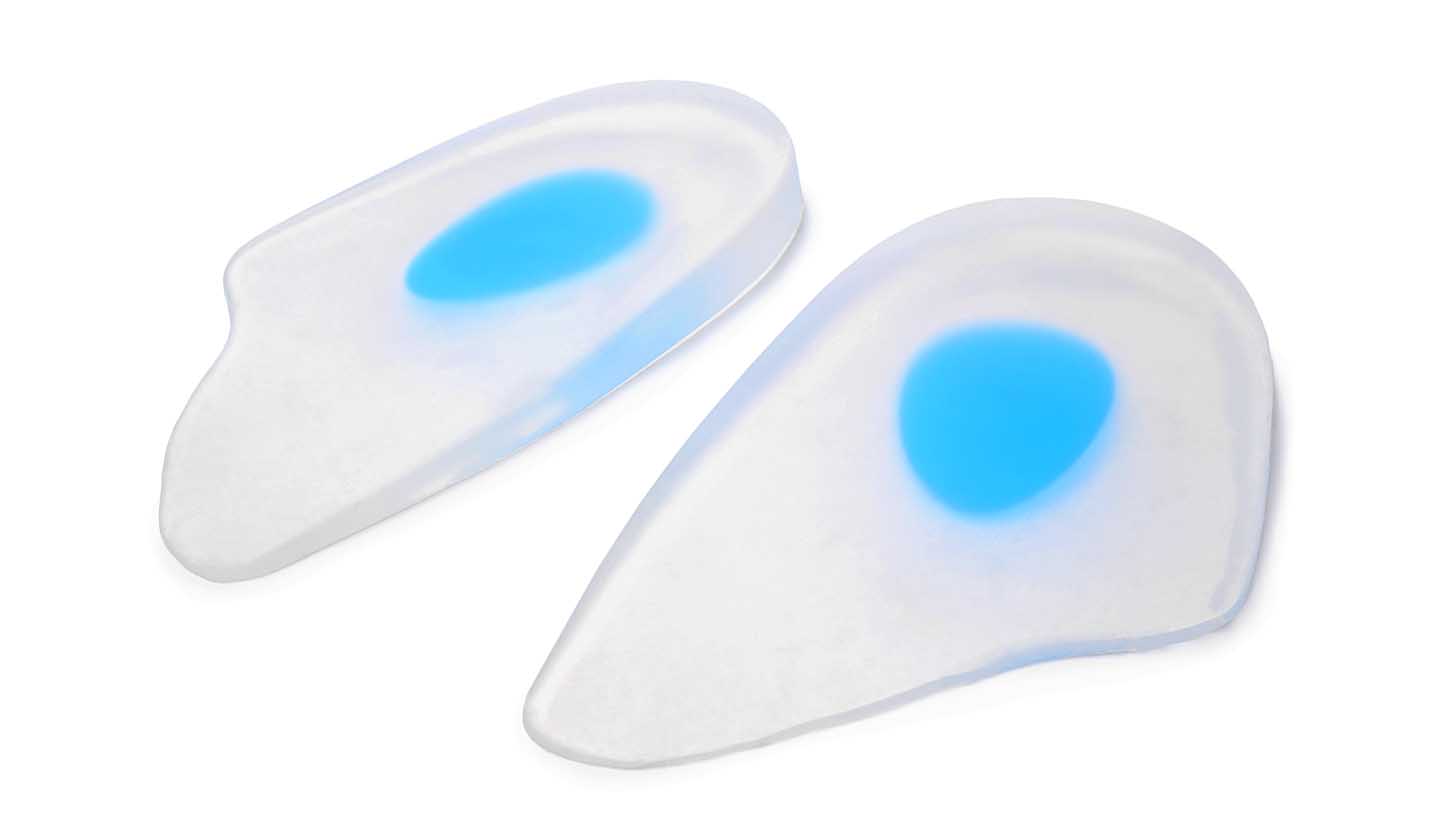
Prevention is the best choice...
- Wear appropriate shoes (the sole should be malleable, avoid flat shoes or excessive wear);
- Avoid walking barefoot;
- Maintain a healthy weight;
- Stay active;
- Before exercising, always warm up and at the end of your workout, perform stretching exercises.
Sources
iSaúde
Farmácia Distribuição Magazine
Também lhe poderá interessar
Bones and joints






